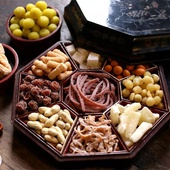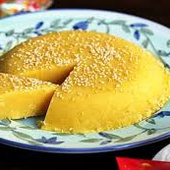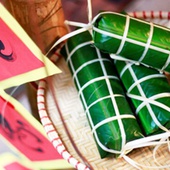Vietnam's Most Common Seeds & Nuts For New Year
During Tet, every family in Vietnam prepares a special tray of snacks to offer guests, featuring a variety of candies, biscuits, jams, fruits, and roasted nuts as essential components of the tray. Vietnamese people enjoy eating roasted nuts primarily to create a cheerful and friendly atmosphere where hosts and guests can savor these treats together.
Unlike pre-shelled seeds found in bulk stores, roasted seeds in Vietnam are kept intact, and separating the edible part from the hull can be both an art and a time-consuming task. After all, who would want to rush during Tet? Enjoying a cup of tea alongside nuts encourages lengthy conversations that can last for hours. Moreover, each type of nut boasts its own unique nutritional benefits and flavors that are best appreciated through tasting. Below are the top five most common roasted nuts and seeds enjoyed in Vietnam during Tet.
Hạt dưa (Watermelon seeds)
If you have savored watermelon, you have likely noticed the numerous black seeds inside. These are known as hạt dưa. Only the largest seeds are selected, dried under heat, and then roasted in large pans to create the final product. There are two types of hạt dưa: red and black, determined by the natural pigments used in the coloring process.
%20-%20Photo%20%40phunutoday.vn.png) Photo @phunutoday.vn
Photo @phunutoday.vn
Hạt dưa is a clean and healthy nut packed with nutrition, including protein, carbohydrates, lipids, vitamins B1, B2, E, calcium, iron, and zinc. The protein in hạt dưa is crucial for the nervous system and the growth of muscles, blood, and bones. Eating a handful of hạt dưa daily can enhance memory and protect against coronary heart disease.
Hạt bí (Pumpkin seeds)
Hạt bí is made from the largest seeds of ripe pumpkins and is one of the most popular nuts during Tet, as it is easier to open than hạt dưa. The preparation of hạt bí follows the same process as hạt dưa, but no pigments are used to color the nuts.
%20-%20Photo%20%40plo.vn.jpg) Photo @plo.vn
Photo @plo.vn
Both traditional and modern medicine recognize hạt bí as being rich in nutrients that benefit human health, such as protein, lipids, carbohydrates, calcium, magnesium, fiber, and L-tryptophan. This nut is now considered a remedy for various conditions, including kidney diseases, intestinal issues, and coronary heart diseases.
Hạt hướng dương (Sunflower seeds)
%20-%20Photo%20%40ifarmer.vn.jpg) Photo @ifarmer.vn
Photo @ifarmer.vn
This nut is harvested once sunflowers have fully matured. After being dried and roasted at the right temperature, sunflower seeds often come with various flavors, such as salt or licorice, making them a delightful snack. Hạt hướng dương is a favorite treat among children and young adults in Vietnam and is often enjoyed throughout the year, especially with ice tea or lemon tea—not just during Tet. In addition to their nutritional richness comparable to other nuts, hạt hướng dương may help slow the aging process, boost cell regeneration, and enhance cognitive function.
Hạt điều (Cashew nuts)
Originating from Northern China and Mongolia, hạt điều is considered one of the most luxurious roasted nuts, as cashew trees only produce fruit every four to five years. Generally roasted with salt for better preservation and flavor enhancement, hạt điều embodies a symbol of good fortune in Vietnam.
%20-%20Photo%20%40oky.vn.jpg) Photo @oky.vn
Photo @oky.vn
Rich in healthy nutrients, hạt điều offers vitamin B1, B2, B3, calcium, protein, phosphorus, and is cholesterol-free. The monounsaturated fats found in hạt điều may reduce cancer risk and are an ideal choice for those on a diet due to their high fiber content.
Hạt dẻ cười (Pistachio)
Pistachios, which originated in Persia (Iran), are among the most luxurious and expensive types of roasted nuts found in Vietnam. Due to their similar shape and eating style to chestnuts, pistachios are commonly referred to as hạt dẻ cười (where "chestnut" is hạt dẻ in Vietnamese). These nuts pair exceptionally well with a variety of beverages, especially tea and alcohol, which are prevalent during Tet.
%20-%20Photo%20%40kolala.vn.jpg) Photo @kolala.vn
Photo @kolala.vn
Pistachios are rich in nutrients that may help slow oxidative stress and promote digestive health due to their high fiber content, also believed to significantly reduce the risk of heart diseases when regularly consumed.

Essenstial Vietnamese New Year's Food
Vietnamese people have a very good habit of saving, which are reflected by the regular meals – rice with a main dishes (meat or fish/shrimp), a vegetable food and a bowl of soup.

Mung Bean Pudding - Vietnamese Che Kho
To many Hanoian generations, mung bean pudding has become a familiar dish which always presents on the ancestors’ altar at New Year’s Eve.

Bánh Tét - Essential to Tet in the South of Vietnam
Banh Tet, a representative cake in the South Vietnam, can be easily found at any house during Tet.











